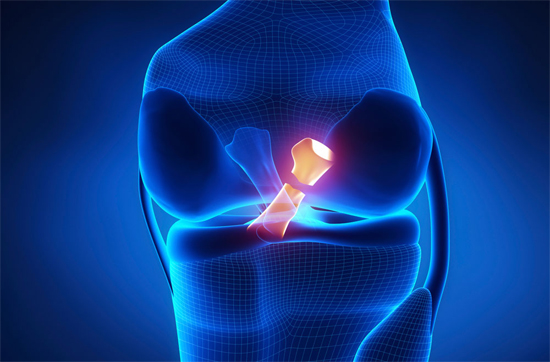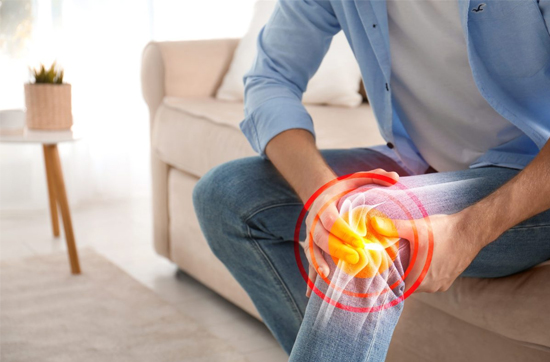Posterior Cruciate Ligament (PCL) Injuries: Overview by Dr. Vikram Sharma
PCL: One of the major stabilizing ligaments in the knee is the bonding structure between the femur, which is the thigh bone, and the tibia or shin bone. It crosses at the back of the knee, where it may prevent the sliding backward of the tibia or leg bone.
The causes of a PCL injury include trauma-like injuries that result from a direct blow to the front of the knee or a fall onto a flexed knee. While this is more rare than a case of ACL, it surely happens and can severely impact the functioning of the knee.
Causes
A common mechanism of PCL injury would be a direct blow to the front of the knee or a fall onto a bent knee and often would be a football, soccer, or basketball injury. Other contributing mechanisms include car accidents and slips and falls, among other trauma to the knee.
Mechanism of Injury
PCL injuries result when the knee is straight and jerked backward. It typically occurs from a blow to the front of the knee, such as in a football tackle or falling onto a flexed knee. PCL injuries can also result from direct blows to the front of the knee, which is very common in a dashboard injury within a motor vehicle accident.
Symptoms
- Pain mainly behind the knee
- Swelling, which usually occurs within hours of injury, though swelling is late and also almost insignificant compared to an ACL injury
- Restricted motion of the knee
- Instability or feeling that the knee tends to give way
- Bruising and stiffness in the knee
- Cannot bear weight on the involved limb.
In chronic or late cases of PCL, many times degeneration begins in the knee, which may lead to permanent damage to the knee joint.
Clinical Tests to diagnose
To diagnose a PCL injury, a healthcare professional generally will perform a physical examination and imaging tests such as X-ray or MRI. Physical examination:
These are common tests that your doctor will conduct to establish a diagnosis. Some common tests are
- Drawer test: To check for the integrity of PCL, the stability of the knee from its posterior side must be tested.
- Dial Test: to check the integrity of PCL and posterolateral corner complex; tests assessment for external rotation stability of the knee.
- Reverse pivot shift test: It is used in assessing the integrity of PCL. It essentially checks for rotational stability at the knee joint.
- Posterior Sag Sign test: The test is carried out to test the PCL regarding its integrity. It measures the amount of posterior tibial translation relative to the femur.
- Patellar compression test: it comprises crepitus (cracking sound comes ) with bending of the knee and increased pain while compressing the kneecap
Diagnosis
The initial diagnosis of a posterior cruciate ligament (PCL) tear is more or less accomplished through a physical examination.
Moreover, other investigations needed to confirm the diagnosis –
- X-rays can be done to rule out any bone injuries.
- It was further elaborated that.
- MRI is a better test for confirmation of PCL tear and to assess the degree of injury.
Grading and Diagnosis of PCL MRI
The grading and diagnosis of PCL injuries are critical in designing the appropriate treatment plan and in the estimation of the prognosis of the injury.
In clinical practice, the grading of PCL injuries is usually assessed on the degree of posterior tibial translation (PTT) that is seen on physical examination. PTT refers to the measurement of backward displacement of the leg bone behind the thigh bone. Some of the various techniques applied in the assessment of the integrity of PCL, along with the degree of tibial displacement, include the posterior drawer test, the reverse pivot shift test, and the dial test.
Clinical examination grading can be done as illustrated below:
- Grade I PCL injury is considered to be a grade I sprain characterized by an increase in PTT with minimal to no instability at the joint level.
- Grade II injuries involve partial tearing of the PCL with a moderate increase in PTT.
- Grade III injury is characterized by the complete tears of the PCL. It manifests as complete tears of the PCL that allow very high joint instability coupled with a severe increase in PTT.
Treatment Plan for PCL injuries
The treatment guidelines vary from multiple factors that include the severity of the injury, the patient's level of activity, and injuries associated with them. Treatments of PCL injury are normally categorized into three: non-surgical management, surgical reconstruction, or a combination of both.
Non-surgical treatment is advised for Grade I and some Grade II PCL injuries, especially in a nondemanding knee. Nonsurgical treatment includes guided physiotherapy; this treatment can only be given in cases where no other associated injury is there.
Surgical intervention is generally advocated for Grades II-III PCL injuries, in that complete tears of the ligament require surgical reconstruction for restoration of stability to the knee joint. Some surgeons advocate for surgical reconstruction in specific Grade II cases in those that have significant instability or in an athlete who needs the highest functionality of the knee. A graft is commonly used in surgeries to replace the torn PCL in place. It can be accessed from the patient or sometimes via a cadaver. The specific characteristics of the injury site and the extent of the tear- would determine it.
The decisions of the treatment plan for the injuries of the PCL depend not solely on the severity of the injury itself but on several other factors as well. For example, in a patient, the level of activity or competitive sport may dictate the need for surgical reconstruction in terms of choice because patients who have high levels of activity or engage in competitive sports may require more function of their knee than sedentary. The patient may also have other injuries associated with it, like meniscal tears or collateral ligament injuries, that may influence the treatment choice.


Generally, the treatment of PCL injuries varies. It would depend on the extent of injury, the level of activity of the patient, and other associated injuries present. For the more minor ones, normally non-surgical treatment would be the way to go, while in more serious tears or with highly active patients, surgical reconstruction would be needed. Restoring or returning the knee joint's resting strength and function is achieved through the combination of physiotherapy or rehabilitation after an injury or surgery.
Choice of Graft in Posterior Cruciate Ligament (PCL) Surgery
In PCL reconstruction surgery, the damaged PCL is replaced by another new ligament called a graft.
Some of the most commonly used grafts are as follows –
- Hamstring graft
- Bone-tendon-bone (BTB) graft
- Patellar Tendon graft
- Peroneus Longus graft
To Understand Graft Options and detailed understating, click the link. Graft options for ACL and PCL are similar so explained by a common video below.
Implants Used in ACL Surgery
Many metallic or Bio composite Implants are used to fix graft in its place. There are various types of implants, as below –
What are Implants used in PCL surgery – In-depth explainer about Implants
Suspensory Implants : Two types of Loops are used below
- Fixed Loop Implants
- Adjustable Loop Implants
Screw Implants- Screw Implants are used to ensure the fixed position of the implant in the knee. There are two types of screws, metallic and bio-composite.
Rehabilitation
The corresponding knee after surgical operations calls for a rehabilitation process to regain strength, movement, and stability.
It must be understood that, just like in the case of ACL injuries, the particular treatment plan should be discussed with a medical professional, and the choice of treatment will depend on individual factors such as needing to remove implants years after surgery- understand it fully.
